by Jocelyn Watkin | Sep 13, 2017 | Information |
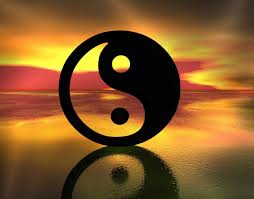
Look forward to better health and wellbeing
There are no more places available for this workshop (on 30 September 2017). Please contact Jocelyn to register your interest for the next workshop. Ph 027 493 9851 or use the Contact Form
Workshop: Saturday 30 September 2017, 9.30am – 12.45pm
Venue: Clayton Park School hall, Wattle Downs, Manurewa, Auckland
Ideal for beginners as well as advanced tai chi students. Adults of any age and high school students are all welcome.
Stressed or tired? Recovering from illness, grief or an injury? Worried about exams or pressure at work? If so, this rejuvenating tai chi for rehabilitation workshop will help you to:
- Boost your energy and strength
- Relieve stress
- Refresh your body, loosen your joints and ease your tensions
- Get a good night’s sleep
- Improve your blood circulation
- Increase your mental clarity and inner peace
- Improve your balance

Feel more balanced, anywhere, anytime, night and day
At the end of the workshop, you will have learned:
- A set of tai chi movements that you can do anytime, anywhere – at work, at home, while travelling – that will help to you to reduce stress, feel stronger and more balanced.
- A breathing technique to help calm and clear your mind and improve your overall health.
- A unique mantra to say to yourself while doing your tai chi to help you move smoothly and integrate your mind and body so you can feel more at peace and sleep better.
Adults of any age and high school students are all welcome. Bookings are essential.
Almost anyone can learn Tai Chi for Rehabilitation and Rejuvenation (TCR) as it can be done while standing, seated or lying down. TCR is a low impact exercise, gentle on your joints and is suitable for all adults and fitness levels. You do not need special shoes, clothing or equipment.
More details about the workshop:
- When: Saturday 30 September, 9.30am – 12.45pm. Please arrive between 9.15 – 9.25am
- Where: Clayton Park School hall, Cr Coxhead and Wattle Farm Roads, Wattle Downs, Manurewa, Map
- What to wear: Loose, comfortable clothing and flat shoes like sneakers. Bring a bottle of water and a snack. If you’d like to try TCR while lying down please bring your own yoga mat or similar.
- Parking: Plenty of free parking. Please note: the car park entrance for the school hall is off Wattle Farm Road
- Price: $67 per person. Current Kia Ora Tai Chi students @ $47 per person
- Optional extra: Buy the TCR practice DVD @ $30 to further assist you after the workshop.

Venue for the workshop: Clayton Park School hall
Ideal for beginners as well as advanced tai chi students. Places are limited to a maximum of 12.
TCR has been especially designed by a medical doctor (Dr Paul Lam) to improve health and wellness, especially when recovering from exhaustion and stressful situations, including illness, grief and accidents. The instructor for this workshop, Jocelyn Watkin, has been trained by Dr Lam and is qualified to teach TCR by the Tai Chi for Health Institute.
This workshop will help you to invest in your future health. Bookings are essential.
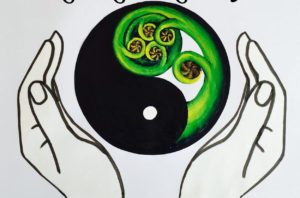
Your future health is in your hands
by Jocelyn Watkin | Aug 26, 2017 | Information |
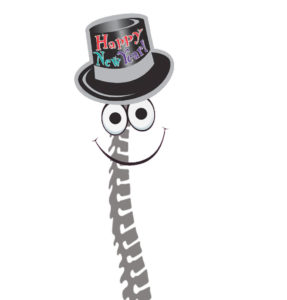
No need to wait until New Year to take good care of your spine. You can do this now.
Bad backs are one of the most common reasons for doctors’ visits and missed work days. So, when your back is being a pain can tai chi help?
Yes, tai chi exercise has been proven to be a safe and effective intervention to reduce pain in those with persistent low back pain. Find out more about this research and discover the five ways tai chi can help you get back to better health with your spine:
- Proper body alignment
- Good posture / recognising the neutral spine position
- Build core stabilization
- Avoid certain body positions and movements
- Practice the four tai chi principles
Check out the details of these key five points here.
Understanding how your spine works and practicing the five key points (as above) are the essence of good spine health. Tai chi can help you to make the right moves and to reduce back pain. Practice tai chi every day, if you can. Don’t wait for New Year to make this happen. Like nature, we are happier and healthier when balanced and in harmony all of the time, not just once per year.
Take good care of your spine and it will take good care of you. Soon, you too could say kia ora (hello) to a better back.
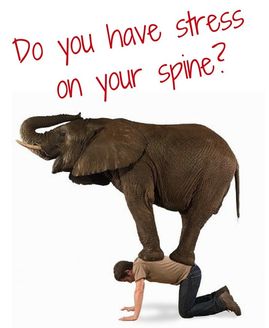
It’s best to avoid certain body positions and movements
by Jocelyn Watkin | Jul 9, 2017 | Information |
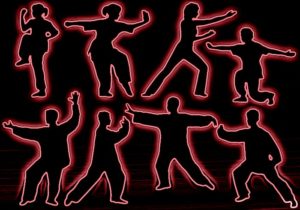 Please note: This is a post from 2017
Please note: This is a post from 2017
Free tai chi lessons: Monday 24 and Wednesday 26 July, 6.30pm. Perfect for winter wellness and to build your inner warmth against the cold.
Do you want to get warm and be fitter and healthier? Do you feel stressed or have trouble sleeping? Maybe you’d love to wave goodbye to the aches and pains of middle-age? If so, then say hello to Kia Ora Tai Chi.
Come along for FREE 45-minute tai chi lessons on Monday 24th and Wednesday 26th July 2017 at 6.30pm, with Jocelyn Watkin, a qualified tai chi instructor, who has been practising tai chi for 15 years. Adults of any age and high school students are all welcome. Join a friendly bunch of people at a great venue, which has lots of free parking.
What to wear: Please wear loose comfortable clothing and flat-soled shoes (such as sneakers, trainers or tennis shoes). Please also bring a drinking bottle of water.
What to expect: The class will begin with a sequence of easy, flowing exercises which are low impact and ge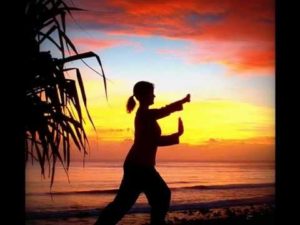 ntle on your joints. Jocelyn and some of her students will then demonstrate the tai chi form so you can see what it looks like. After that, you can have a go for yourself and learn the first few steps.In just one class, you’ll be doing tai chi. By summer, you could be doing a full tai chi set of moves on the beach.
ntle on your joints. Jocelyn and some of her students will then demonstrate the tai chi form so you can see what it looks like. After that, you can have a go for yourself and learn the first few steps.In just one class, you’ll be doing tai chi. By summer, you could be doing a full tai chi set of moves on the beach.
Longer term, tai chi can help you to improve your fitness, health and balance, reduce stress and lower blood pressure. It is an ancient, Chinese martial art that involves a series of movements performed in a slow, focussed manner and accompanied by deep breathing.
Tai chi is suitable for all ages and fitness levels. If you are unable to stand for very long, Jocelyn is also qualified to teach seated tai chi, which you can do alongside the rest of the class.
Dates/times/pricing: Mondays and Wednesdays in Manurewa. After the free lessons, a beginners’ class will start on Monday 31 July and Wednesday 2 August 2017 from 6.30 – 7.15pm. Lessons from $9.50 per class. To RSVP, contact Jocelyn: 027 493 9851 or use the Contact Form to get in touch.
For more information:
by Jocelyn Watkin | Jul 5, 2017 | Information |
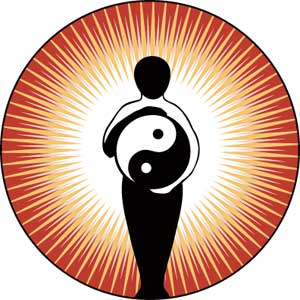 Over May to June 2017, I led a successful pilot to teach tai chi to four blind and low-vision students. The students were all aged 18 and enrolled in the Kickstart Experience Programme (Kickstart) at the Homai Campus of BLENNZ (Blind, Low Vision Education Network, New Zealand). Homai is a suburb of Manurewa, Auckland.
Over May to June 2017, I led a successful pilot to teach tai chi to four blind and low-vision students. The students were all aged 18 and enrolled in the Kickstart Experience Programme (Kickstart) at the Homai Campus of BLENNZ (Blind, Low Vision Education Network, New Zealand). Homai is a suburb of Manurewa, Auckland.
Student A was blind and the other three (Students B, C and D) were partially sighted. Two were young women and the other two were young men. The teacher and the two residential youth workers involved with Kickstart (the staff) joined the lessons to assist me with any health and safety issues.
Two of the staff and myself observed positive changes by the third lesson with two of the students (A and C) and changes were noticed in all students by the end of the six weeks.
The biggest improvements occurred in the areas of balance, posture, fall prevention and stress management. These changes were noted by observation, rather than by quantitative measures.
At the end of the pilot, the students reported on the effects they had noticed and a sample of their comments is as follows:
- Student A: I don’t fall down as often.
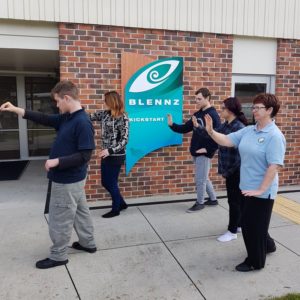
Tai chi with the students. The Kia Ora Tai Chi instructor (Jocelyn Watkin) is in the blue shirt.
- Student B: I’m more relaxed. I’m not stressing.
- Student C: I can now balance on one leg.
- Student D: Tai chi helps me to calm down. I sleep so much better on the night after the class.
As an additional benefit, two of the staff also commented on positive changes in themselves as a result of joining in with the tai chi lessons, such as feeling more energised during the class and more relaxed afterwards.
The pilot was successful and it was agreed to continue with the tai chi lessons until the end of Term Two (July 7th) and also for Term Three (26 July to 29 September).
More about the pilot:
I used the Sun-style Tai Chi for Arthritis for Fall Prevention Programme (the programme) for the 6-week pilot, for which I am certified to teach by the board of the Tai Chi for Health Institute. This programme has been developed by Dr Paul Lam and the Tai Chi for Health Institute to improve balance and posture, strengthen leg muscles and is used extensively for fall prevention. Qigong breathing is an integrated part of the programme and is especially beneficial for overall health, mental relaxation and to manage stress.
During the pilot, all four students learned selected warm-up exercises and the first eight steps of the programme. Student A had 12 one-hour lessons in total over the six weeks: one lesson per week as a 1-on-1 with the instructor and then one 1-hour lesson per week with the other three students (B, C and D).
The purpose of the pilot was to determine if the programme could help the four students with one or more of the following:
- Balance
- Posture
- Fall prevention
- Stress management
- Confidence
- Physical strength and general fitness
- Flexibility (joints and/or overall movement)
- Spatial awareness
- Self-defence
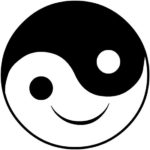
The success of the pilot was attributed to a number of factors, including good preparation, the type of tai chi (Sun-style), the Tai Chi for Arthritis for Fall Prevention Programme (including qigong), my expertise in tai chi, martial arts and teaching, the support of the Kickstart staff and the willingness of the students to give tai chi a go.
For a copy of the full evaluation of the pilot, please get in touch using the contact form on this website.
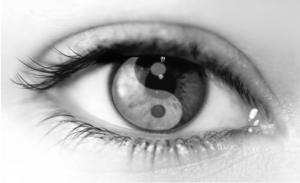
by Jocelyn Watkin | Mar 14, 2017 | Information |
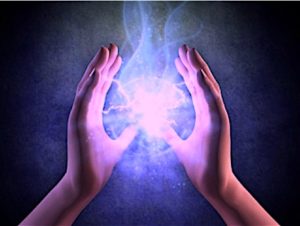 Energy – we all want more! Tai chi is the only exercise I know that seems to give you energy or at least makes you feel more energised.
Energy – we all want more! Tai chi is the only exercise I know that seems to give you energy or at least makes you feel more energised.
Good energy levels are strongly connected with good breathing, which is a key component in tai chi.
Of course, without breath there is no life. You’ve probably heard that old tai chi joke: Student asks: “Master, what is the secret of a long life?” Master replies: “Keep breathing for as long as you can.”
I’ve recently upgraded my instructor qualifications to include Tai Chi for Energy. This programme was created by Dr Paul Lam of the Tai Chi for Health Institute by combining the movements of two different tai chi styles, Chen and Sun:
- Chen style is vigorous and complex, combining fast and slow movements with powerful spiralling, seemingly elastic force.
- Sun style incorporates unique qigong (life energy) movements with agile stepping.
Together, these two contrasting styles enhance energy flows, which can relax, refresh and revitalise. As such, Tai Chi for Energy can help to improve your health and wellness, internal energy, and the ability to manage stress. This form is a natural sequel of Tai Chi for Rehabilitation (which I’m also qualified to teach).
I look forward to teaching my students this exciting and energising tai chi form.
Find out more:
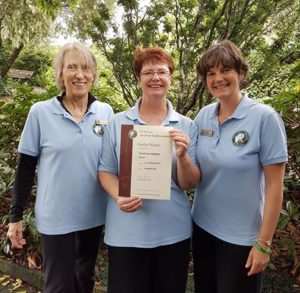
Jocelyn Watkin (centre) was awarded the Tai Chi for Energy Instructor qualification by Master Trainers Janet Cromb (left) and Tamara Bennett (right)
by Jocelyn Watkin | Jan 29, 2017 | Information |
 Please note: This is a post from February 2017.
Please note: This is a post from February 2017.
Free tai chi lessons: Monday 13 and Wednesday 15 February 2017, 6.30pm, in Manurewa.
Do you want to get fitter and healthier? Do you feel stressed or have trouble sleeping? If boot camps are not for you or you want to wave good-bye to the gym then say hello to Kia Ora Tai Chi.
Come along for FREE 45-minute tai chi lessons on Monday 13th and Wednesday 15th February at 6.30pm, with Jocelyn Watkin, a qualified tai chi instructor, who has been practising tai chi for 14 years. Adults and high school students are all welcome.
What to wear: Please wear loose comfortable clothing and flat-soled shoes (such as sneakers, trainers or tennis shoes). Please also bring a drinking bottle of water.
What to expect: The class will begin with a sequence of easy, flowing exercises which are low impact and gentle on your joints. Jocelyn and some of her students will then demonstrate the tai chi form so you can see what it looks like. After that, you can have a go for yourself and learn the first few steps. In just one class, you’ll be doing tai chi. Join a friendly bunch of people at a great venue, which has lots of free parking.
Longer term, tai chi can help you to improve your fitness, health and balance, reduce stress and lower blood pressure. It is an ancient, Chinese martial art that involves a series of movements performed in a slow, focussed manner and accompanied by deep breathing. Tai chi is suitable for all ages and fitness levels. If you are unable to stand for very long, Jocelyn is also qualified to teach seated tai chi, which you can do alongside the rest of the class.
Dates/times/pricing: Mondays and Wednesdays in Manurewa. After the free lessons, a beginners’ class will start on Monday 20th and Wednesday 22nd February 2017 from 6.30 – 7.15pm. Lessons from $9.50 per class. To RSVP, contact Jocelyn: 027 493 9851 or use the Contact Form to get in touch.
For more information:




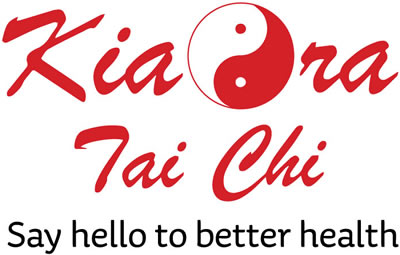


 Please note: This is a post from 2017
Please note: This is a post from 2017 ntle on your joints. Jocelyn and some of her students will then demonstrate the tai chi form so you can see what it looks like. After that, you can have a go for yourself and learn the first few steps.In just one class, you’ll be doing tai chi. By summer, you could be doing a full tai chi set of moves on the beach.
ntle on your joints. Jocelyn and some of her students will then demonstrate the tai chi form so you can see what it looks like. After that, you can have a go for yourself and learn the first few steps.In just one class, you’ll be doing tai chi. By summer, you could be doing a full tai chi set of moves on the beach. Over May to June 2017, I led a successful pilot to teach tai chi to four blind and low-vision students. The students were all aged 18 and enrolled in the
Over May to June 2017, I led a successful pilot to teach tai chi to four blind and low-vision students. The students were all aged 18 and enrolled in the 


 Energy – we all want more! Tai chi is the only exercise I know that seems to give you energy or at least makes you feel more energised.
Energy – we all want more! Tai chi is the only exercise I know that seems to give you energy or at least makes you feel more energised.